To perform the work, you will need a transparent vinyl tube with an internal diameter of 4-5 mm, special keys for 7 and 8 mm for pipe fittings, a container for draining brake fluid, new brake fluid recommended by the manufacturer, an inspection ditch or overpass.
We work with an assistant.
Execution sequence
1. We prepare the car for work (see «Preparing the car for maintenance and repair»).
2. Remove the reservoir cover of the main brake cylinder.
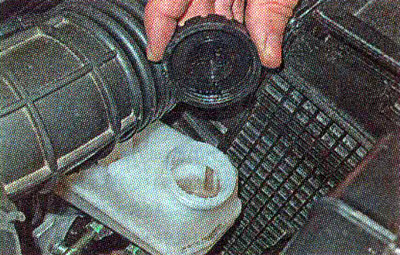
Warning! To prevent air from entering the hydraulic drive of the brake system during pumping, make sure that the level of brake fluid in the reservoir does not fall below the MIN·mark.
3. With a rag we clean the fitting of the brake cylinder of the rear right wheel and the surface around it from dirt.
4. Remove the protective rubber cap from the bleed valve.
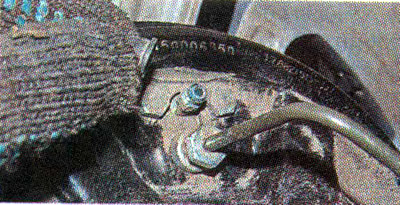
5. We put a special or 7 mm ring wrench on the bleeder fitting,...
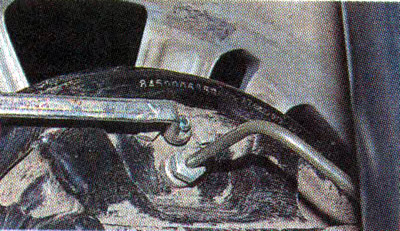
...and then a clear vinyl tube. We lower the other end of the tube into a transparent container partially filled with brake fluid.
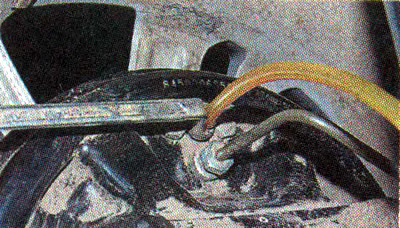
6. The assistant presses the brake pedal 3-5 times and keeps it pressed.
7. We turn off the bleeder valve until the liquid starts to exit from it.
8. After the brake fluid stops coming out of the tube, we wrap the fitting.
9. We repeat the steps described in paragraphs 6-8 until the brake fluid with air bubbles stops coming out of the cylinder fitting, periodically checking the level of brake fluid in the reservoir of the main brake cylinder, after which we finally tighten the bleed valve to a torque of 6 Nm.
10. Remove the vinyl tube and key from the bleeder fitting, put a protective rubber cap on it.
11. Next, remove the cap...
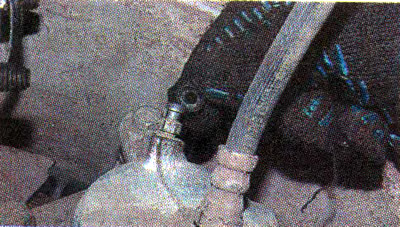
... and pump the brake cylinder of the front left wheel.
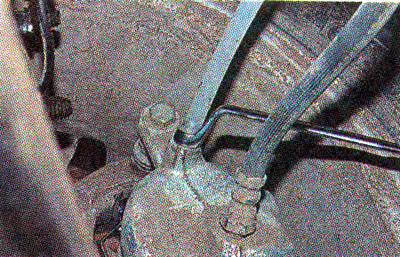
12. In the same way, we pump the cylinders of the rear left and front right brake mechanisms in the indicated order, monitoring the fluid level in the reservoir of the main brake cylinder.
13. Pressing the brake pedal, we check the operation of the hydraulic drive and the absence of fluid leakage from the fittings. If the pedal «soft» or it shifts below its normal operating position, we re-check the tightness of the brake system and repeat the pumping of the hydraulic drive.
14. We check and, if necessary, bring the fluid level in the reservoir of the main brake cylinder to normal (see «Checking the brake fluid level»).
